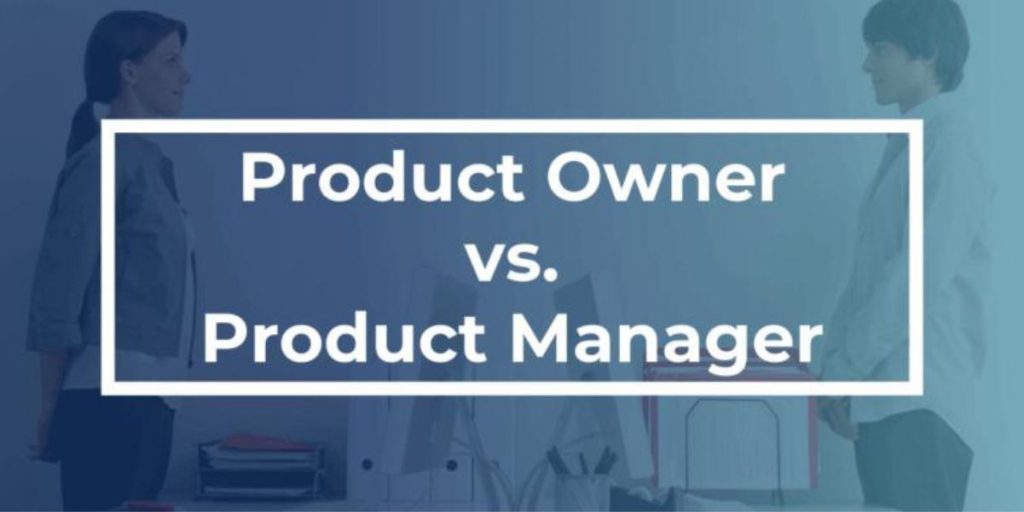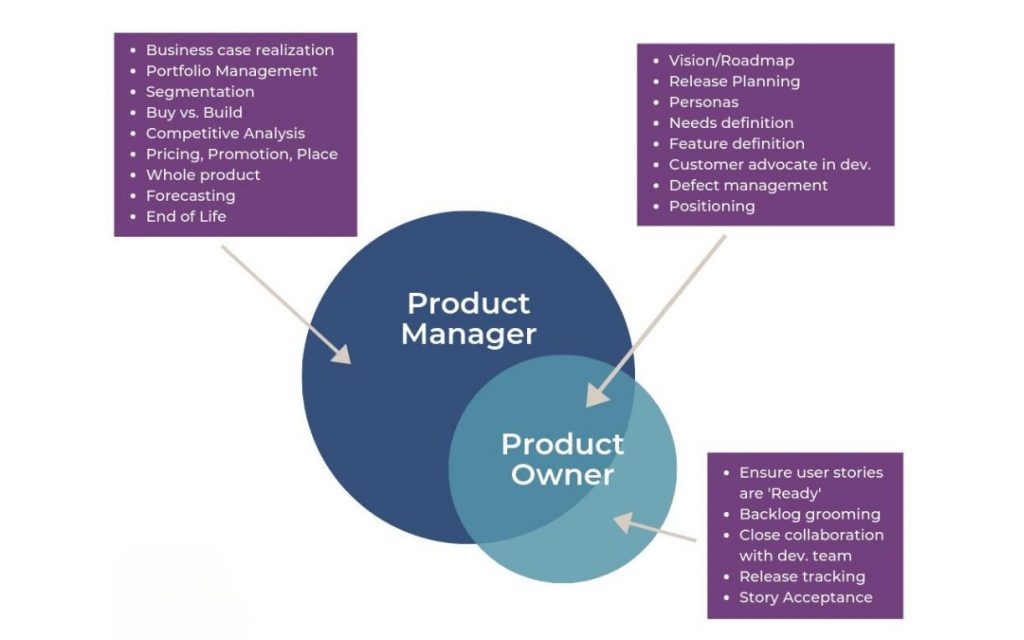
Product Owner vs Product Manager:
It is the job of the Product Owner to maximize the value of the product and the work being done by the development team, while generally, the Product Manager is responsible for driving the strategy and overall success of the product.
Regardless of which role or title you may have, you should have at least a basic understanding of the Product Owner vs. Product Manager comparison; similarities, differences, and overlap.
“What’s the difference between a Product Manager and a Product Owner? Should these roles be separate, or combined into one?” These are some of the most frequently asked questions I hear when I’m out training one of our courses.
In our 2017 Product Management Team Survey we found that in companies doing Agile development, 70% indicated that the Product Manager is also the Product Owner.
If you don’t have a good understanding of both roles, it may seem easy to just combine these roles. But this can be a big mistake. It’s worth learning more about these roles, so you can make an informed decision for yourself.
This article discusses some of what we teach in our Agile for Product Managers and Product Owners Training that includes the worldwide-standard certification credential.
Watch this video from our Agile for Product Managers and Product Owners Training Online Self-Study Course.
Product Owner vs. Product Manager Background
Agile development methodologies have taken the product world by storm. Our study indicates that 69% of teams are doing some form of Agile.
The Scrum framework includes “Product Owner” as one of its defined roles in Agile and so naturally this has spawned a great deal of Product Owner vs. Product Manager confusion and debate.
Before we go any further, it should be noted that this is a discussion about Product Owner vs. Product Manager as roles, not titles. For example, you may have the title of Product Manager and be acting in the role of Product Owner.
To untangle this mess, let’s start with some role definitions.
The Product Manager Role
Broad responsibility that includes business and strategy
Product Management is a broad discipline which comes with a vast range of activities and responsibilities. In general, the Product Manager role is responsible for driving the strategy and overall success of the product.
The job of Product Manager may be defined differently across different companies but if you engage in any of the following responsibilities you are acting as a Product Manager.
As a Product Manager, you should be the market expert because you have listened deeply to your customers. Product Managers are the authority on anything regarding the landscape of the market and act as the voice of the customer in all situations.
You own the product strategy which drives the vision and roadmap, and manage the product throughout its entire lifecycle, not just the development phase.
Product Managers must focus on the problem space and avoid specifically defining the product. They present needs in the form of user stories (when doing Agile) and market requirements (when doing waterfall/phase-gate development) and let the engineers create the solution to solve the problems.
You must ensure that there is a business justification for your decisions, and make the tough trade-offs with regard to features, schedule, and costs.
Ultimately, Product Managers deliver differentiated products to market based on a winning strategy they have defined, and their role traditionally belongs to the “business” side of things.
The Product Owner Role
Focused responsibility on features/development
Much like the Product Manager role, Product Owners’ tasks may vary depending on the situation, but based on the Scrum Guide, there are a few special tasks that absolutely need to be done by the Product Owner.
It is the job of the Product Owner to maximize the value of the product and the work being done by the development team.
As a Product Owner you are the sole person responsible for managing and ordering the product backlog.
Product Owners prioritize and manage user stories and need to work closely with the development team to ensure they understand what each item in the product backlog is and why it is important.
Comparing the Roles
Now that we have a clearer understanding of each role, let’s look at how the roles need to work together, if they are being occupied by two separate individuals.
Because there’s been so much confusion around these roles, we developed this visual representation of how the roles relate to each other.

The Big Issue is That All These Tasks Need to Get Done
You need to have clarity on who has responsibility for each of these items.
When looking at the Product Owner vs. Product Manager graphic above you can see that Product Owners are responsible for more of the detailed work and how closely they work with the development team.
There are many tasks that you can find in the top right corner of the graphic which overlap between the PM and PO roles; when allocating these, it may be helpful to take individual strengths and weaknesses into consideration. No matter how the tasks are divided, the PM and the PO need to remain synchronized on the Product/Vision and the Release Planning priorities, so that they each do their respective jobs effectively.
In the top left portion of the chart, you see a set of tasks that are outside the scope of what Agile defines as that of the Product Owner.
If you only remember one thing from this article, it should be how things are broken out in the graphic. Make sure that it is clear who does what and that nothing is left out.
Many organizations struggle with dividing their Product Owner vs. Product Manager responsibilities and assign it all to one person. For products that serve as a component of a larger product, serve as an “internal” product used only by other employees, or that are a “supporting” product that serves external customers under the covers, it may be appropriate for one person to fill both the Product Owner and Product Manager roles. In these situations, there are fewer market, competitive, and pricing issues to consider, so the strategic load of the combined role is manageable.
But for commercial, customer-facing products the strategic context becomes much larger, and having one person fill both roles can lead to two big problems:
- The workload becomes overwhelming. At this point the person ends up focused only on what is urgent and detailed.
- As a result, the strategic functions of the Product Management role get minimal attention. The result is that the product may meet needs short-term for customers but ultimately fails in the longer-term.
How to get help!
If you find you or your company in this situation, what can you do to fix it? I have found the following approach helpful in the past:
- Review the chart above and honestly evaluate how effective this one person is at each of the tasks listed – rate this effectiveness on a scale of 1 to 5.
- For all of the tasks listed that received a score of 3 or less, ask yourself “what is the impact on the quality and value of my product, and our larger business of me not executing this task well?” Write down explicitly these impacts – missed market opportunities, lack of competitive features, lack of understanding of customers’ real needs, lower revenue opportunities, etc.
- Meet with your manager to review this evaluation and its impacts. Discuss whether it’s worth it for the company to invest in hiring a second person to take on either the PM or PO role. For a small product with lower revenues, it honestly may not make sense. But for products with higher revenues, or a clear line of sight to higher revenues in the future, this should be pretty easy to justify financially, particularly if having a stronger strategic focus can unlock this revenue opportunity.
- Together, make the case to the management team to hire the role!
Learn More
If you would like to learn more about the roles of Product Owner vs. Product Manager and how to be excellent in an Agile environment, take our training course: Agile for Product Managers and Product Owners Training, available in-person or as an online course.


